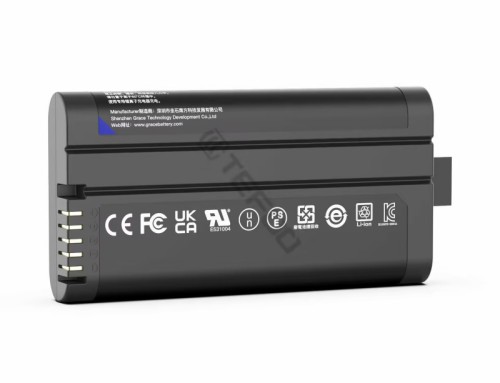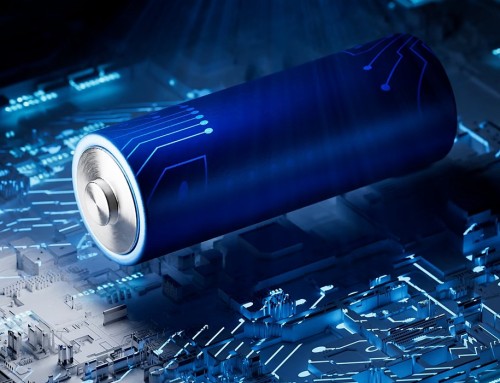Circuit Protection in Lithium Battery Management System (BMS)
BMS Overview:
BMS is the first letter of the Battery Management System abbreviation combination, called the battery management system.BMS is mainly for intelligent management and maintenance of each battery unit, to prevent the battery from overcharging and over-discharging, to extend the service life of the battery, and monitor the battery status, its functions mainly include the following aspects:
Battery monitoring:
BMS monitors various parameters of each battery in the battery pack in real-time through the battery management chip (BMC). This is the basic function of BMS, including the measurement and calculation of some index parameters, including voltage, current, temperature, power, SOC (state of charge), SOH (state of health), SOP (state of power), SOE (state of energy). SOC can be commonly understood as the amount of charge left in the battery, and its value is between 0-100%, which is the most important parameter in the BMS; SOH refers to the state of health of the battery (or the degree of deterioration of the battery), and it is the ratio of the actual capacity of the current battery to the rated capacity, and the battery can’t be used in the power environment when the SOH is lower than 80%. These data can help determine the state and health of the battery and be used for subsequent protection measures.
Battery Balancing:
From the production point of view, each battery has its life cycle and characteristics, there are no two identical batteries, and the capacity of different batteries cannot be the same due to the inconsistency of materials such as diaphragm, cathode, and anode. For example, the consistency indexes of differential pressure and internal resistance of each cell composing a 48V/20AH battery pack are different within a certain range.
From the use point of view, in the process of battery charging and discharging, the process of electrochemical reaction is never consistent. Even for the same battery pack, the temperature and bumping degree will cause different battery charging and discharging, which will lead to inconsistent capacity of the battery cell. Therefore, batteries need both passive and active balancing.
Passive balancing: when used in parallel on both ends of the battery that needs to be balanced, when the battery voltage rises to a certain set value due to charging, the start-up switch will be connected to the discharge resistance, the excess power in the form of heat loss, but there is a certain degree of insecurity, is not conducive to energy saving and environmental protection, is not suitable for the use of high-power battery packs, and is only applicable to charging balancing.
Active balancing is a kind of battery balancing that has been developed rapidly in recent years, and its principle is to send a part of the power of the high-voltage battery back to the battery circuit or directly to the low-voltage battery through the conversion device, the energy storage components used are mainly capacitors or inductors, and the voltage of the batteries in the battery pack can be achieved through the repeated charging and discharging of capacitors or inductors to achieve the basic balance of the voltage of the batteries.
The significance of battery balancing:
Its basic significance is the use of electronic technology so that the lithium-ion battery single-unit voltage deviation is maintained within the expected range, to ensure that each single battery is in normal use without damage. However, if the balance is not controlled, with the increase of charging and discharging cycles, the voltage of each single cell is gradually differentiated, and the service life will be greatly shortened.
Temperature management:
The temperature of the battery has a great impact on its performance and life, and the BMS will monitor the temperature of the battery pack through temperature sensors. When the temperature of the battery exceeds the preset range, the BMS will take appropriate measures, such as reducing the charging speed or stopping charging, to protect the battery from overheating damage.
Charge and Discharge Control:
The BMS can control the charging and discharging process of the battery according to the characteristics of the battery and the usage requirements. For example, the charging current and charging voltage can be controlled during charging to prevent the battery from being overcharged; during discharging, the discharging current can be controlled according to the demand to prevent the battery from being over-discharged. In addition, the BMS can also detect and protect the battery pack from overcurrent, short circuits, and other abnormalities during the charging and discharging process.
Fault diagnosis and alarm:
The BMS can monitor the status of the battery pack in real-time, and when it finds that the battery is faulty or abnormal, for example, when the temperature is too hot, the BMS will directly disconnect the charging and discharging circuits for overheating protection and send an alarm to the background. And record the relevant fault information for troubleshooting and processing.
- Li-ion battery will mainly issue alarms for the following problems:
- Over-charging: single unit over-voltage, total voltage over-voltage, charging over-current;
- Over-discharge: single unit under-voltage, total voltage under-voltage, discharge over-current;
- Temperature: high core temperature, high ambient temperature, high MOS temperature, low core temperature, low ambient temperature;
- Status: flooding, collision, inversion, etc.
The BMS battery management system unit comprises a BMS battery management system, a control module, a display module, a wireless communication module, an electrical device, a battery pack for supplying power to the electrical device, and a collection module for collecting battery information from the battery pack, the BMS battery management system being connected to the wireless communication module and the display module respectively through a communication interface, the output end of said collection module being connected to an BMS battery management system The output of the acquisition module is connected to the input of the BMS, the output of the BMS is connected to the input of the control module, the control module is connected to the battery pack and the electrical equipment, and the BMS is connected to the server side of the SERVER through the wireless communication module, which is capable of transferring the perceived and measured relevant data to the operation and management platform in real time.
Why do lithium batteries need BMS?
Due to the poor safety of lithium batteries, there are occasional explosions and other defects. In particular, lithium batteries with lithium cobalt as the cathode material cannot be discharged with high current and have poor safety. In addition, almost all kinds of lithium batteries overcharge or over-discharge will cause irreversible damage to the electric core.
Lithium batteries are also extremely sensitive to temperature: if used at too high a temperature, it may cause electrolyte decomposition, combustion, or even explosion; too low a temperature will lead to significant deterioration in the performance of lithium batteries, affecting the normal use of equipment.
Due to the limitations of the lithium battery production process, the internal resistance and capacity of each battery cell will have differences. When more than one battery unit is used in series, it will cause the charge and discharge rate of each cell to be inconsistent, which leads to a low utilization rate of battery capacity.
Given this, lithium batteries in the actual use of the process usually need a special protection system to monitor the health status of the battery, and to manage the use of lithium batteries. Lithium battery management systems can effectively monitor, and protect, the energy balance and fault alarm of the lithium battery pack, thus improving the efficiency and service life of the whole power battery pack.
However, lithium batteries are widely used in various precision equipment due to their many advantages such as high working voltage, small size, lightweight, high energy density, no memory effect, no pollution, small self-discharge, long cycle life, and so on.
Composition principle of BMS:
Lithium battery management system (BMS), through the detection of the state of each single battery in the power battery pack to determine the state of the entire battery system, and according to their state of the power battery system for the corresponding control adjustments and implementation of the strategy, to achieve the power of lithium battery system and the charge and discharge management of each single to ensure the safe and stable operation of the power battery system.
Typical lithium battery management system topology is mainly divided into two blocks: master control module and slave control module. Specifically, it is composed of the central processing unit (master control module), data acquisition module, data detection module, display unit module, control components (fusing device, relay), and so on.
Data and information communication between the modules is generally achieved by using internal CAN bus technology. Based on the functions of each module, BMS can detect the voltage, current, temperature, and other parameters of the lithium power battery in real time, realize the thermal management, equalization management, high-voltage and insulation detection of the power battery, etc., and calculate the residual capacity of the power battery, the charging and discharging power, and the SOC & SOH status.




